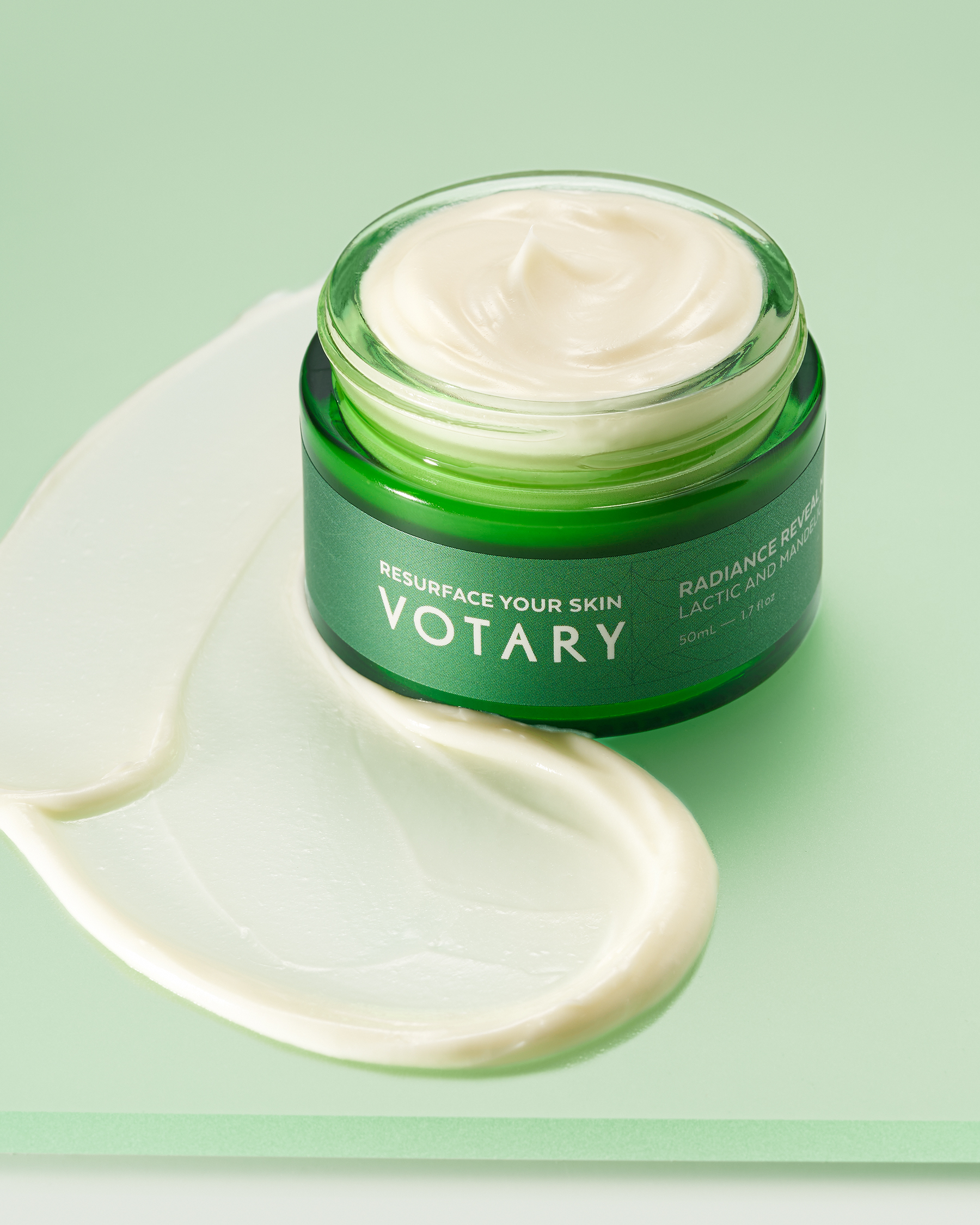Today, let’s chat about AHAs.
AHAs or alpha hydroxy acids are water-soluble acids and are chemical exfoliants. It is widely accepted that the way AHAs work is by removing calcium ions from epidermal cell adhesions resulting in the weakening of these intercellular adhesions which causes the shedding of dead & dry skin cells. Studies suggest that the reduced calcium levels promote further cell growth while slowing down differentiation, thus lessening the appearance of wrinkles!
There are various types of AHAs that can be incorporated in your skincare. While all of them are great exfoliants, the way you use them and the effect they have can be varied.
Glycolic Acid is the most common type of AHA. It is derived from sugarcane. Its anti-microbial properties help treat acen and many other issues. Since it penetrates deeper than any of the other AHAs, it is considered to be the most potent. So, beginners are recommended to start with a gentler AHA.
Citric Acid is derived from citric fruit extracts. Often, it is used to balance the pH levels of the skin and can serve as a good solve for rough patches. It is also used as an adjuster in various skincare products, usually toners and serums, to neutralise other harsher acids.
Malic Acid is made from apple acids and is a mild AHA that doesn’t do much on its own. Since it penetrates slower into the skin, it is used with stronger acids to have gradual affect on different layers. It can be created synthetically as well.
Tartaric Acid is made from grape extracts. Like citric acid, it can be used as a pH adjuster. Like malic acid, it can be used to exfoliate the topmost layer of the skin and can be created synthetically as well.
Lactic acid is made from dairy extracts. It is one of the gentlest AHAs due to its larger molecular size. Lactic acid is also a part of the skin’s natural moisturizing factor (NMF). While it’s naturally found in sour milk & yogurt, it can be synthesized from vegan sources as well. The beautiful Radiance Reveal Mask by Votary contains a vegan source of lactic acid. I recommend starting with using it 1-2 times a week.
Fun fact: Cleopatra famously bathed in milk (sour donkey’s milk) to get the benefits of lactic acid in sour milk.
Mandelic Acid is derived from almond extracts. It also an AHA and has a molecular size that is larger than even lactic acid, making it even gentler and a great acid for sensitive skin. In addition to brightening the skin, it has antibacterial and anti-inflammatory properties.
Supporting Exfoliation with Barrier Repair
I want to be sure that whenever we talk about renewal & resurfacing, we also talk about hydration & skin barrier support, each complementing the other.
Let’s take a dive into the realm of the aforementioned two acids—Lactic and Mandelic. In what ways do they benefit your skin?
Benefits of Lactic Acid
- It is the most hydrating AHA. Lactic Acid is a humectant; it works as a magnet and attracts water molecules to your skin.
- It is gentle and less irritating than glycolic acid. This makes it great for dry and sensitive skin types.
- It diminishes fine lines and wrinkles.
- It strengthens the lipid layer as it stimulates skin cell regeneration.
- It helps fade hyperpigmentation.
- It fights acne by unclogging pores.
- It smoothens and brightens skin.
Benefits of Mandelic Acid
- It is a strong anti-ageing element in skincare products.
- It treats hyperpigmentation and melasma.
- With potent anti-bacterial traits, it combats acne.
How often should you exfoliate your face?
While the internet is divided about this question, there is only one honest and correct answer. As you start with your exfoliation journey, you should should only indulge in it 1-2 times a week (on days you aren’t using retinol). However, gradually, you and your skin will learn about the intensity at which the products are working, and you will be able to increase the frequency of your exfoliation routine.
It is important to note that exfoliation using any AHA can make your skin sensitive to sun. So, it is important to always follow it up with a good sunscreen.
The discourse around exfoliation has been making the rounds for years now. What has worked best for you? Let me know in the comments!

